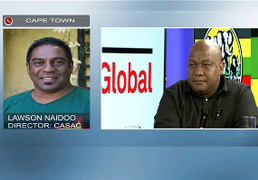THE state funeral of former president Nelson Mandela started on time on Sunday morning in Qunu in the Eastern Cape with the full pomp and ceremony required for such an event.
African National Congress (ANC) deputy president Cyril Ramaphosa, the programme director, welcomed guests from abroad and around the country.
“Each one of us ... (and) millions of people around the world have had their own Madiba moment,” he told mourners. “Today we come to lay him to rest ... South Africa’s greatest son.”
Mr Ramaphosa said: “Behind me are 95 candles lit early this morning. They represent the years of his life ... and more especially the contribution he made to our country.”
He said it was imperative that the service ended in time. “In terms of the traditions of this part of the country, the person is meant to be laid to rest when the sun is at its highest,” he said.
South African and international dignitaries, including Archbishop Emeritus Desmond Tutu, had gathered from early on Sunday at a specially constructed dome.
Mandela’s coffin, draped with a South African flag, was borne on a gun carriage as it was transported to the venue. It was taken along a dusty road lined by South African National Defence Force personnel. Cannon were fired, accompanied by a military band and parade.
The state funeral was to last for about two hours, followed by a traditional AbaThembu burial service that would end at about midday.
About 4,500 guests were attending the funeral at the Mandela family farm, and 450 had been selected to attend the final burial of the body.
A guard of honour comprised members of the army’s four most senior infantry regiments, the air force, the navy and the South African Military Health Service. During the entire service, the artillery was to fire a regular cannon salute, culminating in a full 21-gun salute when Mandela was finally laid to rest.
President Jacob Zuma walked immediately behind the casket as it was carried into the funeral dome.
Mandela’s widow Graca Machel and ex-wife Winnie Madikizela-Mandela took their seats in the front row. Both women were dressed in black and their hair was covered.
Also among those present were ANC stalwart Ahmed Kathrada, former human settlements minister Tokyo Sexwale, ANC deputy president Cyril Ramaphosa, former president Thabo Mbeki and several Cabinet ministers.
Britain’s Prince Charles arrived, after British Prime Minister David Cameron had earlier this week attended the official memorial for Mandela held at the FNB Stadium in Johannesburg.
Also attending were Reserve Bank Governor Gill Marcus and Zimbabwe’s Movement for Democratic Change leader Morgan Tsvangirai. US civil rights activist Jesse Jackson and US ambassador to South Africa Patrick Gaspard took their seats, alongside businessman Patrice Motsepe.
Archbishop Tutu changed course on Saturday night and announced plans to attend the funeral after all, after earlier saying he would not go because the government had not made him feel welcome and he did not want to "gatecrash" the funeral of his longtime ally and friend.
"Much as I would have loved to attend the service to say a final farewell to someone I loved and treasured, it would have been disrespectful to Tata (Mandela) to gatecrash what was billed as a private family funeral," he said in a statement. "Had I or my office been informed that I would be welcome there is no way on earth that I would have missed it."
However, government officials said the archbishop had been accredited to attend and would be welcome.
With Sapa, Sapa-AP
-
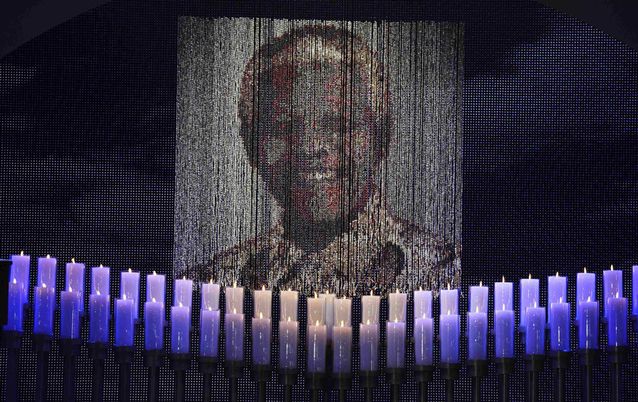
Candles are lit under a portrait of Nelson Mandela at his state funeral in Qunu on Sunday. Picture: REUTERS
-
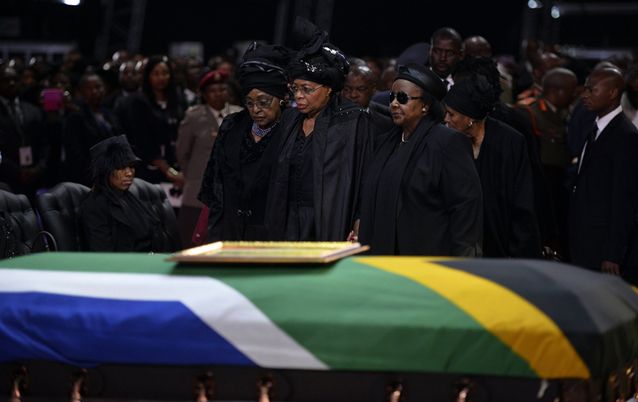
Nelson Mandela’s ex-wife Winnie Madikizela-Mandela (left) and widow Graca Machel (centre) during his funeral ceremony in Qunu on Sunday. Picture: REUTERS
-
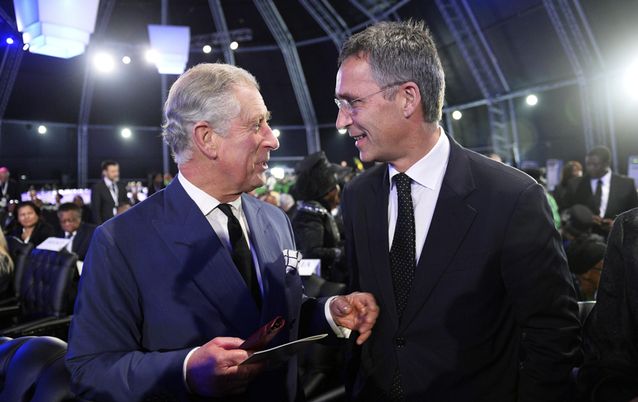
Britain’s Prince Charles (left) speaks to Norway's former prime minister Jens Stoltenberg as they arrive for the state funeral of Nelson Mandela in Qunu in December last year. Picture: REUTERS
THE state funeral of former president Nelson Mandela started on time on Sunday morning in Qunu in the Eastern Cape with the full pomp and ceremony required for such an event.
African National Congress (ANC) deputy president Cyril Ramaphosa, the programme director, welcomed guests from abroad and around the country.
“Each one of us ... (and) millions of people around the world have had their own Madiba moment,” he told mourners. “Today we come to lay him to rest ... South Africa’s greatest son.”
Mr Ramaphosa said: “Behind me are 95 candles lit early this morning. They represent the years of his life ... and more especially the contribution he made to our country.”
He said it was imperative that the service ended in time. “In terms of the traditions of this part of the country, the person is meant to be laid to rest when the sun is at its highest,” he said.
South African and international dignitaries, including Archbishop Emeritus Desmond Tutu, had gathered from early on Sunday at a specially constructed dome.
Mandela’s coffin, draped with a South African flag, was borne on a gun carriage as it was transported to the venue. It was taken along a dusty road lined by South African National Defence Force personnel. Cannon were fired, accompanied by a military band and parade.
The state funeral was to last for about two hours, followed by a traditional AbaThembu burial service that would end at about midday.
About 4,500 guests were attending the funeral at the Mandela family farm, and 450 had been selected to attend the final burial of the body.
A guard of honour comprised members of the army’s four most senior infantry regiments, the air force, the navy and the South African Military Health Service. During the entire service, the artillery was to fire a regular cannon salute, culminating in a full 21-gun salute when Mandela was finally laid to rest.
President Jacob Zuma walked immediately behind the casket as it was carried into the funeral dome.
Mandela’s widow Graca Machel and ex-wife Winnie Madikizela-Mandela took their seats in the front row. Both women were dressed in black and their hair was covered.
Also among those present were ANC stalwart Ahmed Kathrada, former human settlements minister Tokyo Sexwale, ANC deputy president Cyril Ramaphosa, former president Thabo Mbeki and several Cabinet ministers.
Britain’s Prince Charles arrived, after British Prime Minister David Cameron had earlier this week attended the official memorial for Mandela held at the FNB Stadium in Johannesburg.
Also attending were Reserve Bank Governor Gill Marcus and Zimbabwe’s Movement for Democratic Change leader Morgan Tsvangirai. US civil rights activist Jesse Jackson and US ambassador to South Africa Patrick Gaspard took their seats, alongside businessman Patrice Motsepe.
Archbishop Tutu changed course on Saturday night and announced plans to attend the funeral after all, after earlier saying he would not go because the government had not made him feel welcome and he did not want to "gatecrash" the funeral of his longtime ally and friend.
"Much as I would have loved to attend the service to say a final farewell to someone I loved and treasured, it would have been disrespectful to Tata (Mandela) to gatecrash what was billed as a private family funeral," he said in a statement. "Had I or my office been informed that I would be welcome there is no way on earth that I would have missed it."
However, government officials said the archbishop had been accredited to attend and would be welcome.
With Sapa, Sapa-AP

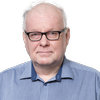
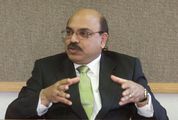
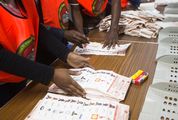
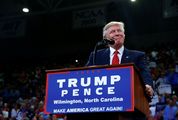

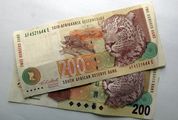



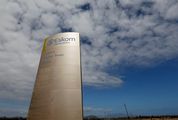
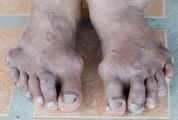
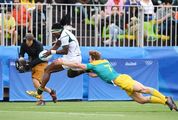

 News and views on the death, and life, of former president Nelson Mandela, with tributes and photographs
News and views on the death, and life, of former president Nelson Mandela, with tributes and photographs













